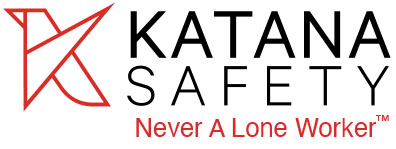




A comprehensive way to address one of Airlines core initiatives – employee safety, and how with the flick of a finger, you can transform from a company with thousands of unique risks to a proactive, pre-emptive and empathetic mitigator of risk.
The time transitioning to, from, and between flights shouldn’t be a source of stress. That’s why Katana Safety has designed a device that, with the mere flick of a finger, sets in motion a chain of events that prevents a bad situation from getting worse. And because we’ve designed it to travel anywhere, your team will be continually reminded, every time they pick up their phone, that you have their back.
There have been other attempts to close this gap, but they fall short for a number of reasons. Weapons aren’t viable for a number of reasons – least of all licensure. An extra device that would provide all these benefits can easily be forgotten, because it’s not your smartphone. And those apps – well we’ve already outlined why they just don’t work when you’re being attacked.
What happens when you give your flight attendants a quick trigger on that omnipresent smart phone? They can breathe a little easier. And with less stress, they can perform better.
They will know you care about them and are willing to make proactive investments in their well-being. They pay that forward to your passengers, who reward you with positive reviews and higher bookings, which drive up shareholder value.
Solving this problem is personal to us. And we believe that’s reflected in our solution.
Layover and flight safety is only part of it. From airport to city to crew hotel, there are inherent vulnerabilities. Though unlikely, what happens if a flight attendant is assaulted or abducted while on a trip? And what if you find out you could have done more to prevent it? Beyond that, what if others start asking if there’s more you could have done to prevent it?
It’s why crew hotels are kept secret. It’s why hotel partners check under beds before flight crews arrive. It’s why movement to and from the airport happens in groups. Yet while defined policies and procedures are important, both for safety and to mitigate liability, they depend on 20,000 human beings to follow them. And they may not be enough against a truly bad actor.
